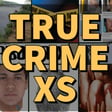Speaker
Now, Clay Campbell is gone. He's no longer the prosecutor for DeKalb County. He's been replaced by a guy named Richard Schmock. Richard Schmock, he's in the position of being basically the district attorney of DeKalb County. They call him state's attorney, same thing. But he does conduct a fairly extensive review of the evidence. And in Richard Schmock's opinion, he concludes that Jack McCullough, regardless of what people think about him, he couldn't have committed this particular crime. And his opinion was that he was actually innocent. According to Schmock, Evidence that was kept out of the trial clearly established Jack McCullough's whereabouts on the evening that Maria had been abducted and murdered. In his opinion, it supported his alibi. In particular, he pointed out that Illinois Bell phone records, they showed that Jack McCullough had actually made a collect phone call as John Tessier to his mother that evening from a pay phone in downtown Rockford rather than from Sycamore. That was the allegation at trial. Given the timing of this telephone call, the 40 mile distance between Sycamore and Rockford, icy road conditions that night, Mock says that McCulloch could not possibly have been in two places at one time. He did not believe that he could have been in Sycamore at the time that Maria disappeared. So finally in March of 2016, we get a new court hearing. And on April 15th of 2016, Illinois Circuit Court judge named William P. Brady, he vacates Jack McCullough's original conviction and his sentence, and he orders a new trial. So Jack McCullough is still charged with his crime, but he's released on bond that day pending this new trial. A week later, Judge Brady ends up dismissing the charges against Jack McCullough. The dismissal of this murder charge was without prejudice. That meant that if new evidence came up, Jack McCullough could be tried again for the murder of Maria. They just have to have a prosecutor that wants to do so. So Charles, Maria's brother, he He makes a request at that time where he has this petition that allegedly had hundreds of Sycamore citizens' signatures on it, including the city's mayor, that Judge Brady should appoint a special prosecutor to replace Richard Schmock because of a conflict of interest on Jack


